Clear, comprehensive, and organized company policies are integral to all organizations’ smooth and safe operation. Unfortunately, policy creation can be a time-consuming operation, leaving room for corners to be cut or — worse yet — policy documents to not be created at all.
Having a pre-designed and customizable policy template lets leaders get more agile with policy creation, ensures uniformity across all departments, and provides a framework for designing new policies which prevent essential details from slipping through the cracks.
This article will discuss why policy templates are crucial for today’s organizations, help generate inspiration by sharing several different policy template examples, and provide a free editable policy template to help get started fast!
What is a policy template?
Company policies are guidelines outlining how employers and employees should act in various situations. Organizations implement these policies to communicate expectations, ensure compliance with local and federal legislation, and guide employees to operate safely and respectfully.
Often, these policies are structured in a very similar manner, including a few typical sections.
- Purpose
- Definitions of key terms
- Scope and limitations
- Individual responsibilities
That’s why policy templates exist.
A policy template is a customizable sample document with basic yet necessary company policy information. For example, it might include a list of definitions for terms used across all policies, making it simple for policy creators to copy the template so that all definitions will live in a new, company-specific policy document.
It also provides a structure that leaders and managers can use to design new policies. For example, a policy template typically includes defined sections to add policy details, limitations, and purposes.
Specific policy templates — such as privacy policy and sick leave policy templates — can also serve as a point of reference and inspiration, meaning companies don’t necessarily have to write their entire policy from scratch. Instead, they can take a pre-written policy with generic information and edit and customize it to their needs.
Why use a policy template?
Policy templates offer several significant benefits. They ensure consistency across departments, reduce the likelihood of human error, and improve the efficiency of creating new policies.
Enhances efficiency
A key reason policy creators like templates is the time-saving component.
Leaders can quickly create a template copy, rather than setting up a new document every time, copying and pasting information like company details and definitions, and determining how to structure the policy. The original template is intact for future use.
Provides more consistency and better organization
Using a policy template ensures consistency across all policies and departments. Also, employees are already familiar with the basic structure used, creating a more professional, consistent appearance.
Reduces the likelihood of human error
Policy templates also help reduce the chance of human error by providing a formalized structure that policy creators must adhere to and by including pre-written information such as legal definitions.
Makes rework and revisions easier
Company policies are often updated to reflect changing conditions, such as newly introduced legislation or internal changes in the company (i.e., restructure). When policies have been created from a template, it’s much easier to apply changes across the entire policy base, as certain sections will be identical across all policies. Easily copy and paste new content. Done.
What are some examples of policy templates?
There are pretty much an endless number of possible policy templates. Here are a few:
Privacy policy template
This template example serves as a helpful starting point for creating a website privacy policy. It provides customers with an understanding of how — if at all — their data will be used and the steps necessary to ensure their safety and anonymity.
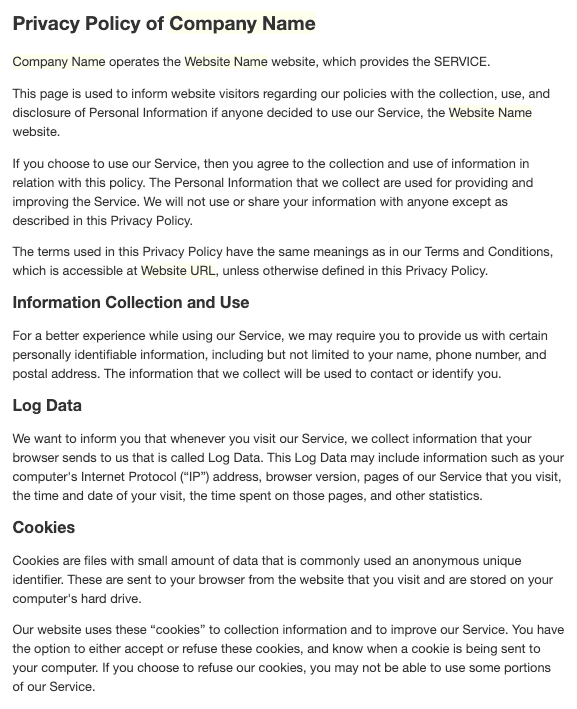
Hiring policy template
Hiring policies serve two purposes:
- Inform hiring managers of company expectations around hiring, such as reasonable adjustments for applicants with disabilities.
- Allow job applicants to understand what the hiring and interview processes will look like.
This policy template provides the HR department with a clear structure to build a fair hiring policy and includes some pre-written clauses, easily editable to fit your organization.
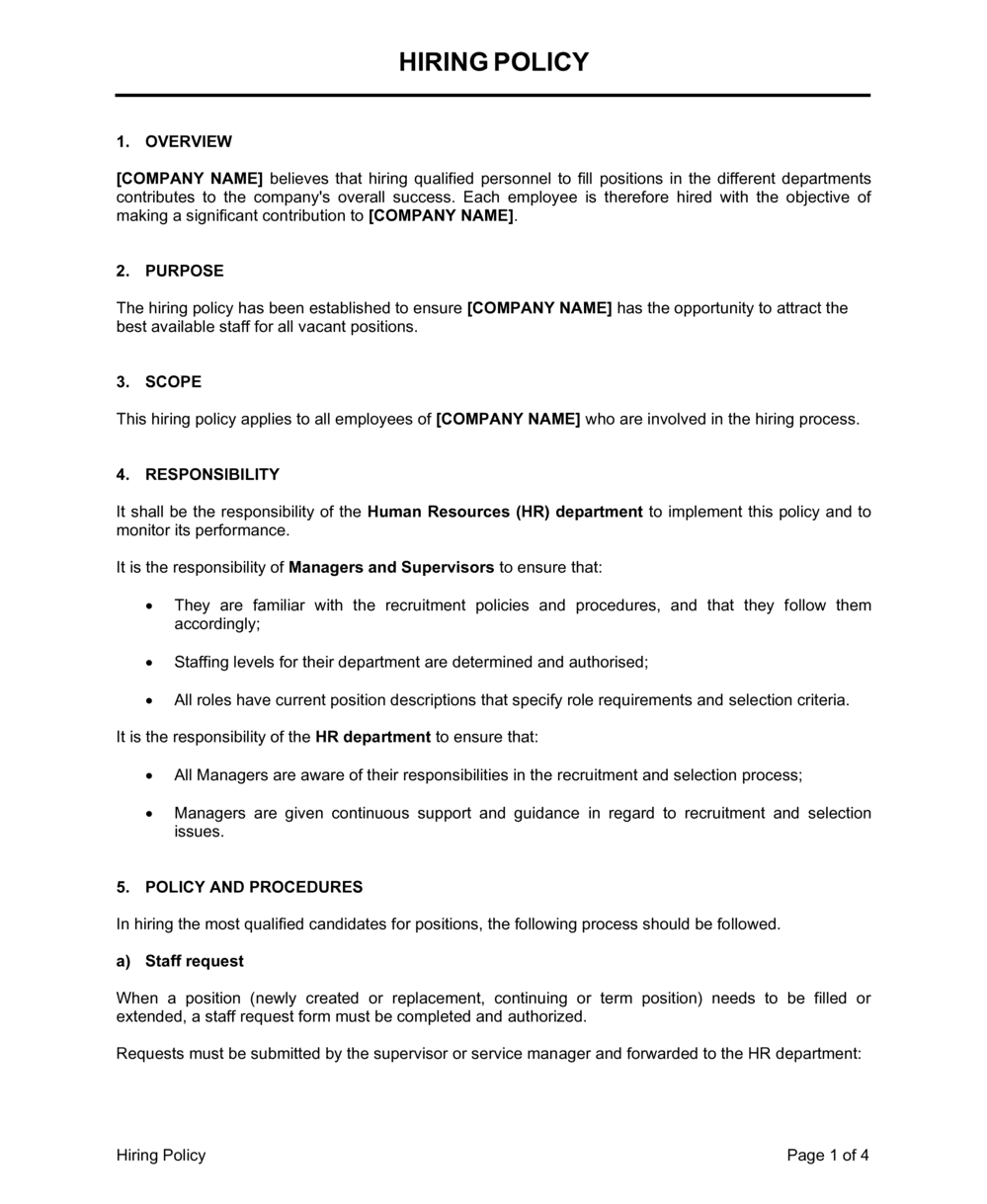
Remote work policy template
It’s no secret that remote work has become incredibly common over the past couple of years, with thousands of businesses switching to fully or partially remote work structures. If your organization allows employees to work remotely, then it’s vital to have a clear policy to inform workers of expectations around:
- Communication
- Time and activity tracking
- Internet usage
- Availability for meetings
- Appropriate locations for work
- And more
This remote work policy template includes some pre-written policies — such as criteria for selection — all editable and customizable. In addition, it contains important headers to include details such as the policy scope and purpose.
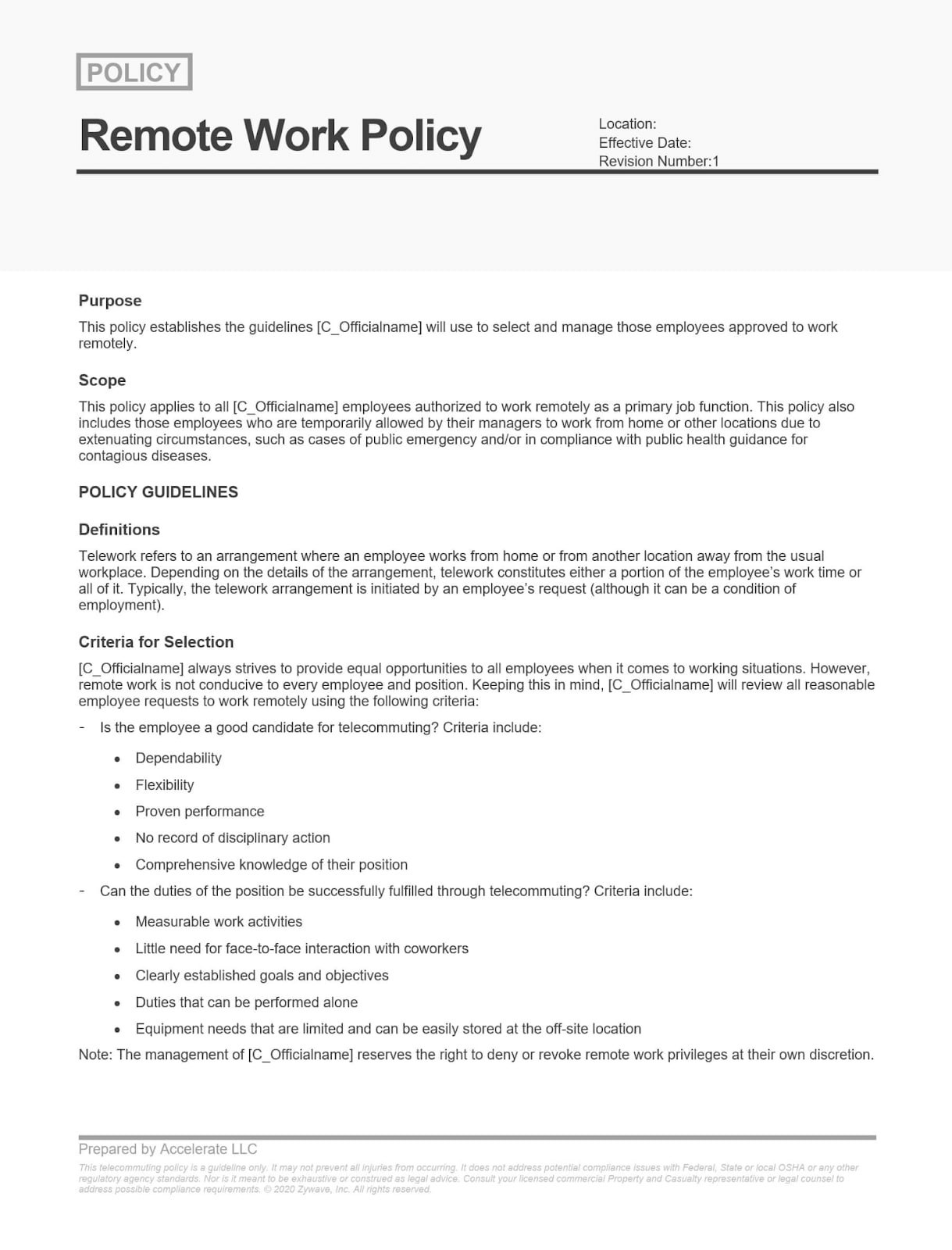
Sick leave policy template
This policy template is a great starting point for designing a customized sick leave policy. Note that some clauses are pre-filled. Use these “as is” or edit as necessary. Other sections require editing, such as the maximum number of accruable sick days.
monday.com’s policy template
Like the ones we’ve discussed above, most policy templates come in the form of an editable PDF, Google Doc, or Microsoft Word document. While these are popular formats and great platforms in their own right, they’re missing a crucial ability: collaboration.
Our policy template is built on monday.com workdocs. This powerful, intuitive, collaborative word editor allows for real-time co-editing and connects directly with your monday.com boards to provide accurate, up-to-date information as it evolves.
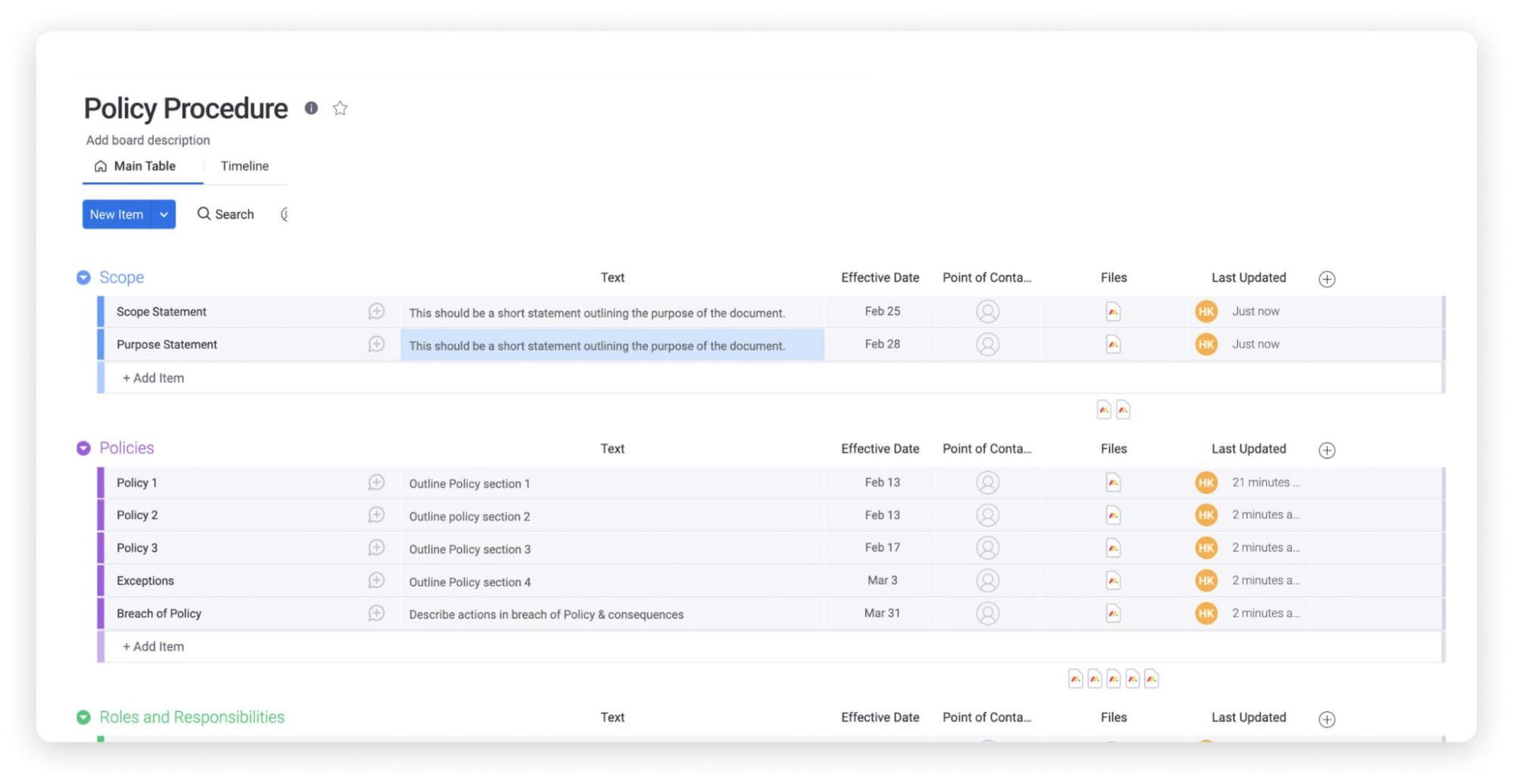
The policy template includes predefined subheaders relevant across various policy types — such as Purpose, Definitions, and Scope — and editable fields to insert company-specific.
BONUS: Because it’s built on workdocs, it is simple to pull in data from other monday.com-integrated apps. For example, a sick leave policy can be directly linked to the monday.com form built for employees to log sick leave requests.

Four policy template tips & tricks
A few (4!) policy template suggestions …
1. Include these critical sections in any policy template
Designing your own policy template? Make sure to include these important sections:
- Policy header
- Policy purpose
- Policy statements
- Definitions
- Table of contents
- Policy and procedures
- Scope of policy
- Responsibilities
2. Have policies reviewed by legal counsel
Before releasing any new policy document to your organization, it’s good to have it reviewed by a legal representative. In some cases, policies may be required to comply with specific legislation.
Even if you’re creating a business policy that isn’t bound by any laws, it’s worth ensuring there is no exposure to any potential future liabilities.
3. Ensure company policies are accessible in a central location
Policies should be easily accessible to all who need them when they need them. An employee who needs to take a sick day should be able to quickly find the company sick leave policy and follow the appropriate guidelines.
The monday.com Work OS is the ideal place to host all of your current policies — a centralized location, accessible anywhere.
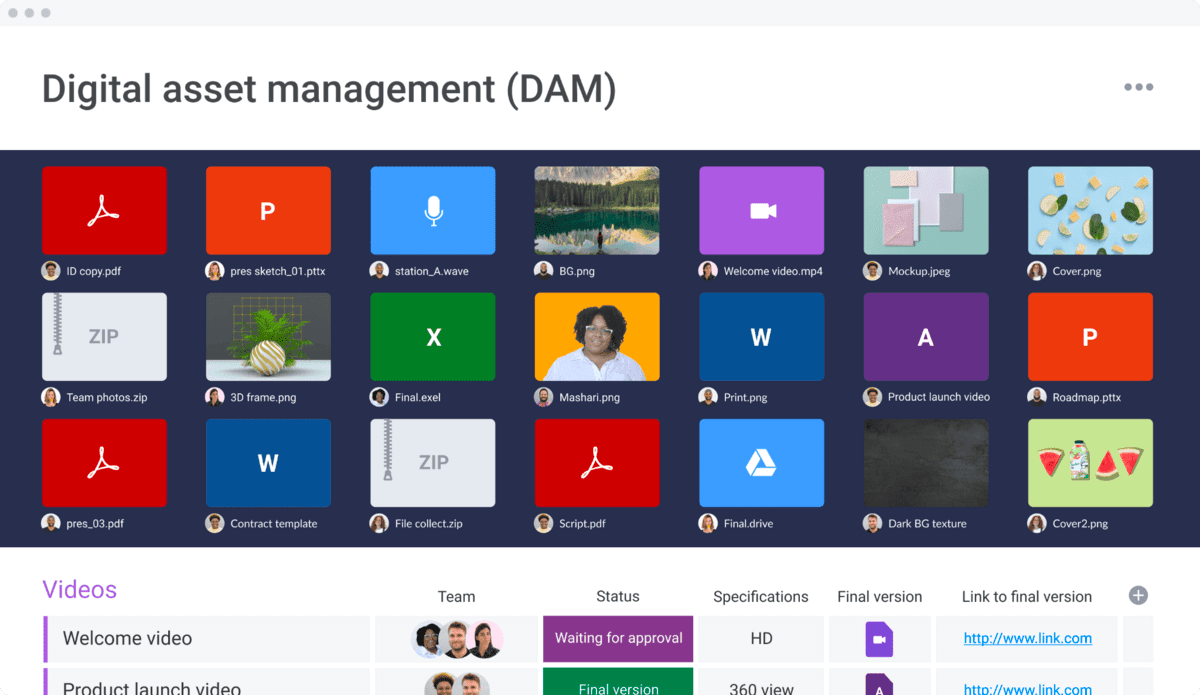
4. Use clear, accessible language where possible
Employees shouldn’t need a law degree to read and comprehend a basic policy. Effective policies are concise and clear, and use everyday language where possible.
By making sure your company policies are accessible, you encourage employees to read them thoroughly and reduce the likelihood of any misunderstandings.Use a tool like the Hemingway Editor to improve the readability of your policies.
FAQs about policy templates
Q: How do I create a policy and procedure template??
A: Policy templates are customizable, editable documents serving as inspiration and structure for creating new company policies. Create a new template, review existing policies, find commonalities, and create a document that focuses on those. Customizing the template we offer on this page or any online alternative is also recommended.
Q: How do you write a policy?
A: 6 steps …
- Determine the need. What is this policy for?
- Identify who is responsible for creating the policy.
- Gather the required information. What legal responsibilities are necessary?
- Start with a template and draft the policy.
- Have the policy reviewed by appropriate stakeholders or legal counsel.
- Finalize the policy and roll it out to the company, ensuring it is easily accessible.
Q: Does Word have a policy template?
A: Microsoft Word does not offer a native policy template. However, the team at monday.com has created a free policy template for you! Get it here.
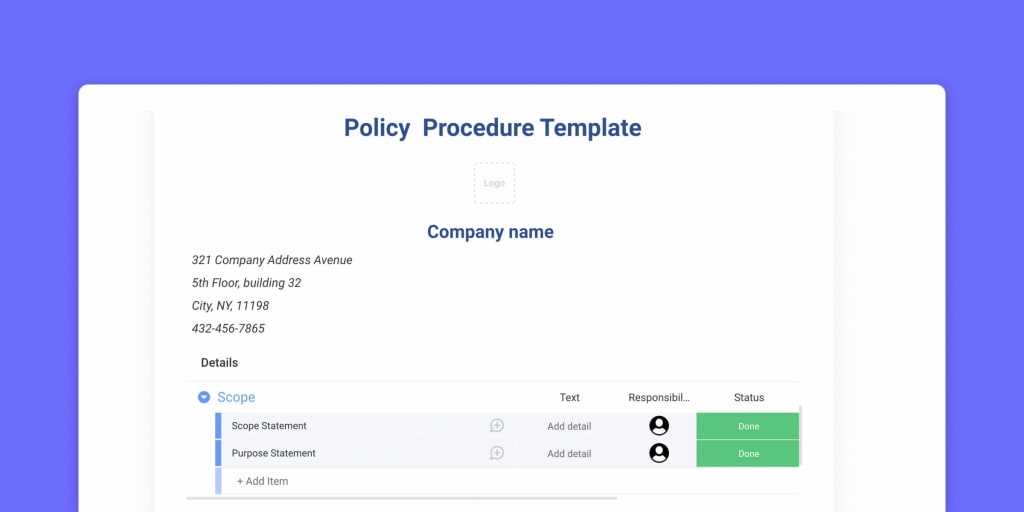
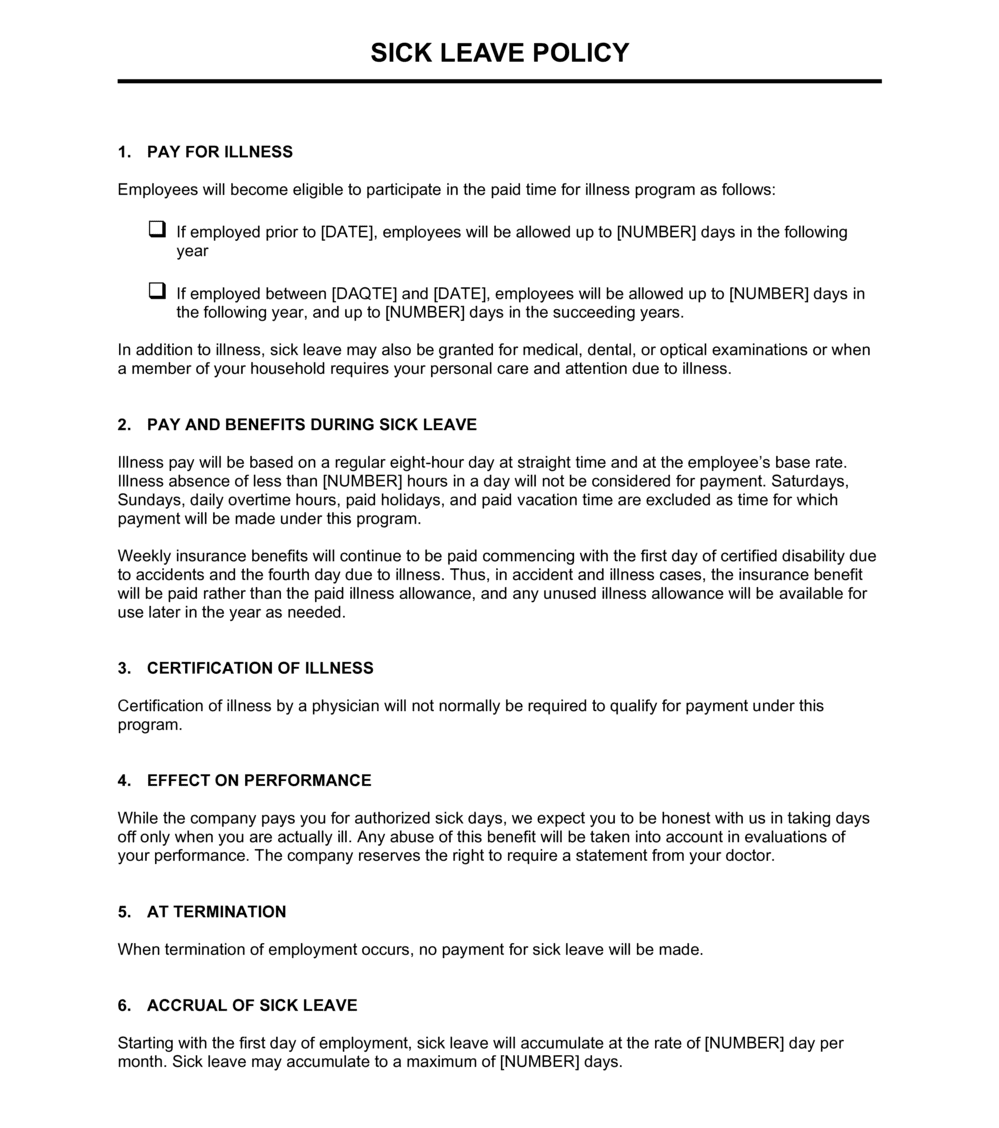 (
(